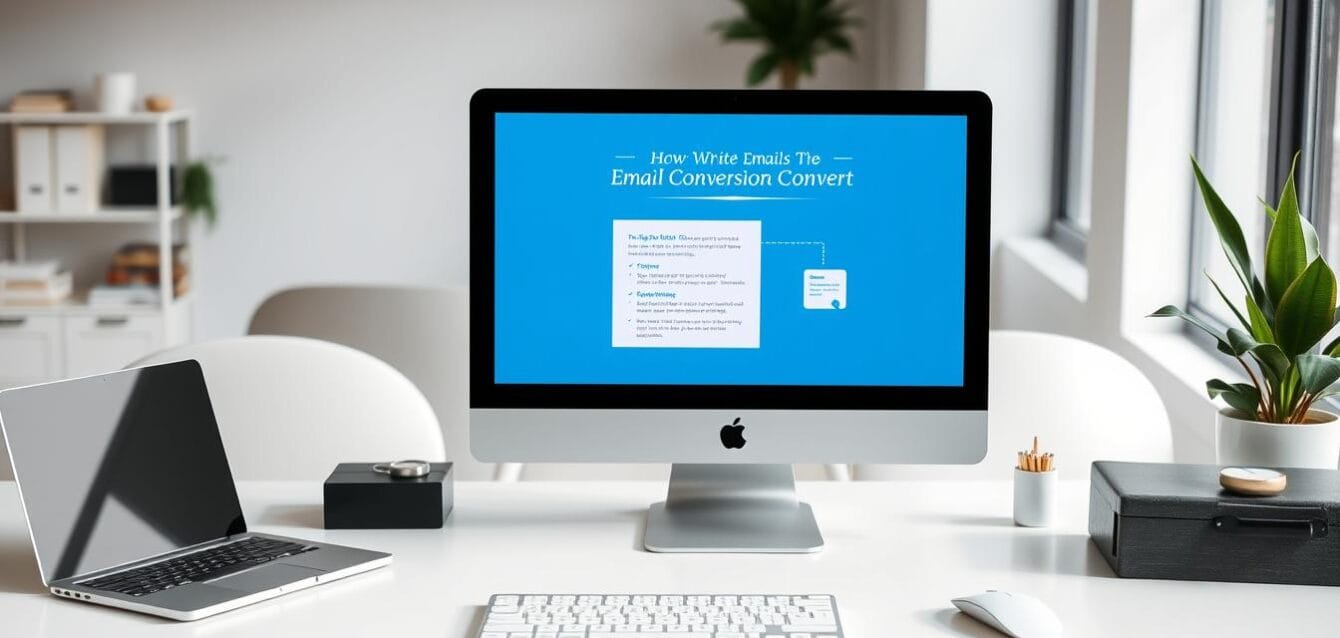One stat will change your priorities: brands that treat the inbox as a controlled channel see average ROI double that of comparable paid search and social spends.
We open with a hard truth: the inbox is the one place you truly control. No auction volatility. No algorithmic throttling. That control makes this channel the most dependable growth lever for premium brands that need predictable revenue.
In this guide we promise actionable, data-backed tactics to lift conversion, protect deliverability, and scale profitably. We focus on segmentation, subject-line science, one-variable A/B tests, and ESP metrics like opens, CTR, bounces, and spam rates.
We partner with you to compress long sales cycles for high-ticket offers. Expect templates, lifecycle playbooks, and compliance checks—CAN-SPAM, GDPR, CASL, CCPA—so every send is auditable and authoritative.
Ready to move from opens to booked revenue? Access Macro Webber’s Growth Blueprint or book a strategic consult to operationalize this playbook.
Key Takeaways
- Inbox control beats algorithmic uncertainty for predictable ROI.
- Segmented, permission-based lists drive higher conversion.
- Use one-variable A/B tests and ESP metrics to optimize with certainty.
- Compliance and authentication protect deliverability and brand trust.
- Our frameworks turn attention into booked revenue for high-ticket brands.
The inbox is your highest-ROI channel right now—here’s how to win it
When you own the subscriber relationship, ROI becomes predictable — not guesswork. We build control into growth by treating the inbox as an owned distribution layer that scales margin without platform fees.
Why high-ticket brands can’t rely on algorithms
Algorithms change. First-party access does not. We prioritize list health and engagement so the path from send to sale stays open.
The conversion gap: opens vs. revenue and how to close it
Opens are signals, not outcomes. To turn attention into appointments and revenue, align subject, preheader, and the post-click experience.
- Segment by behavior and lifecycle so the right message meets intent.
- Match landing pages to the email headline and offer to cut friction.
- Measure CTOR and post-click conversion, not vanity opens.
- Scale winners into templates and retire low-performing flows.
We tie these tactics together with the A.C.E.S. Framework to protect deliverability and convert attention into measurable success.
Email Marketing Best Practices: The 2025 playbook for scalable results
Today’s inbox strategy must balance AI acceleration and stronger privacy demands. We rely on tools to speed testing and surface insights, then apply human editorial judgment to verify facts and tone.

What’s changed: AI, privacy, and consumer fatigue
AI speeds hypothesis generation—subject lines, send-time suggestions, and content drafts appear faster. But every AI suggestion needs fact-checking and brand alignment.
Regulations are non-negotiable. Consent-first capture, clear unsubscribe paths, and lawful processing under GDPR, CAN-SPAM, CASL, and CCPA protect revenue and reputation.
What hasn’t: Relevance, clarity, and trust
“Quality over frequency wins: give subscribers fewer, clearer reasons to act.”
- Use preference centers to reduce fatigue and set expectations.
- Segment by behavior and lifecycle to match message to intent.
- Measure the metric tied to the goal and test one variable at a time.
- Standardize winning email marketing campaigns into templates and flows.
Design baseline: responsive templates, accessible alt text, and a clear visual hierarchy to preserve legibility across devices.
Compliance and tools that protect your revenue and reputation
Legal compliance and solid tooling are the backbone of any repeatable inbox strategy. We design systems that scale while keeping legal risk and deliverability issues off the roadmap.
Choose an ESP built for scale and measurement
Regular clients and consumer mail apps do not scale. Pick an ESP that offers automation, segmentation, deliverability monitoring, and granular metrics beyond opens—CTOR, bounces, and complaint counts.
Know the rules: CAN-SPAM, GDPR, CASL, CCPA
Operationalize compliance: identify senders clearly, provide easy unsubscribe links, document consent with timestamps, and localize disclosures for the jurisdictions you serve.
Authentication essentials: SPF, DKIM, DMARC
Authenticate fully: publish SPF records, sign with DKIM, and enforce DMARC to block spoofing and protect inbox placement. Stop using no-reply addresses; use humanized sender names and valid replies to build trust.
- Segment transactional and promotional streams so critical messages remain deliverable.
- Run a pre-send checklist to catch render issues, broken links, and spam triggers that harm rates.
- Monitor delivery, spam percentage, and complaints in one dashboard and educate legal, IT, and product stakeholders.
We audit consent logs, enforce authentication, and embed these controls so the foundation is unbreakable—protecting reputation is protecting revenue.
Build a permission-based list that compounds value
Compound growth starts with permission and systems that respect subscriber intent.
We enforce double opt-in so every signup proves intent. A confirmation click filters bots and typos and improves deliverability for high-ticket sends.

We state consent clearly and offer transparent preference centers. That upfront clarity sets cadence and content expectations for new users.
Organic capture and loyalty
Grow organically with gated assets, executive webinars, VIP loyalty offers, and targeted newsletter invites. These capture qualified contacts—never rented lists.
Hygiene and reengagement
Quarterly scrubs remove bounces and fake addresses. We run reengagement sequences with value-first offers before sunsetting to preserve sender reputation.
- Diversify capture: site forms, event QR, and social integrations—consent only.
- Right-size cadence: progressive downshifts based on behavior to avoid fatigue.
- CRM sync: pass consent, lifecycle stage, and interests to sales for aligned follow-up.
Every ethical signup increases lifetime value and reduces paid dependency—quality subscribers compound revenue over time.
Segment and personalize like a pro
Segmentation lets you serve different offers to different buyers without extra friction. We slice the list by demographics, on-site behavior, purchase cadence, and location to match offers to intent.
We microsegment so each audience sees relevant creative and timing. That reduces unsubscribes and raises conversion.
Behavioral, lifecycle, and geo-based segmentation
We map behavior: browsing signals, recency and frequency, cart events, and past opens. Then we align lifecycle stages—new lead, nurture, customer, win-back—with stage-specific offers.
Dynamic content that matches funnel stage
Dynamic blocks let us swap headlines, testimonials, and offer tiers inside the same template. Personalization goes beyond a name: product affinity, AOV, and category interest drive recommendations.
Reward your VIPs without alienating everyone else
Pilot new templates and CTAs with high-value subscribers. Offer early access and tiered perks, but keep criteria transparent and provide clear paths to unlock benefits.
- Localize sends for time zone and inventory relevance.
- Measure lift: CTOR, conversion, and revenue per recipient versus batch sends.
- Iterate weekly—feed results back into a dynamic segmentation model.
Result: precise campaigns that respect trust, lift conversion, and build long-term loyalty.
Subject lines, preheaders, and from-names that lift open rates
Subject lines are the single strongest lever to win attention in a crowded inbox. Keep them short, clear, and purposeful: test 3–5 word urgency-driven variants against ~50-character lines to see which resonates with each segment.
Preheader text should complete the promise. Use it to add benefit, timeframe, or handle a common objection. Never leave the preheader as a default “view in browser” or generic footer text.
Humanize the sender. Replace no-reply with a real name or a recognizable brand-person combo. That simple change builds trust, improves reply rates, and helps deliverability.
Test sparingly with emojis and personalization. When you use a name or product category in the subject line, ensure it adds relevance—not filler. Isolate one variable per test: subject, preheader, or from-name.
- Short and strong: prioritize clarity and urgency over wordplay.
- Complete the promise: let preheader add context or a next step.
- Human sender: use a person or clear brand voice, never no-reply.
- One-variable tests: measure what actually moved the rate.
- Avoid spam triggers: excessive ALL CAPS, many emojis, or misleading urgency.
“Test relentlessly. Keep the winner, document the results, and scale what works.”
Copy, design, and CTAs that drive clicks and conversions
Design and copy must work like a single conversion engine. We focus on one clear promise, short paragraphs, and a visual path that guides action.
Write scannable, value-first copy with one primary message
One message per send: lead with benefit, keep paragraphs tight, and end with a decisive CTA. Use bold sparingly to highlight the single action you want readers to take.
Responsive templates, accessibility, and alt text
Use responsive templates with a 500–650px content width for mobile readability. Align typography and color with brand rules so recognition is instant.
Accessibility: include descriptive alt text for images, logical heading order, and high color contrast to improve reach and trust.
Buttons, links, and visual hierarchy that spotlight your CTA
Place the primary cta above the fold. Use a contrasting button color and action-focused text. Limit secondary links so they support, not siphon, clicks.
Use images, GIFs, and interactivity without killing load time
Balance text and images: visuals add emotion; copy delivers the offer. Compress assets and defer heavy scripts to keep load fast and reduce drop-off.
| Design Element | Action | Metric Impact | Revenue Outcome |
|---|---|---|---|
| Single headline | Clarifies offer | Higher CTOR | Faster conversions |
| Contrasting CTA | Improves visibility | More clicks | Increased pipeline |
| Compressed images | Faster load | Lower bounce | Higher completed funnels |
We test interactive elements like accordions or polls only when they add measurable lift and have graceful fallbacks for older clients. Above all, align the email text and visuals with the landing page to protect conversion and E‑E‑A‑T.
Send strategy: timing, cadence, and frequency without fatigue
A precise send window can lift conversion more than a new subject line. We treat timing as an experimental lever. Small timing wins compound into better inbox placement and higher long-term engagement.
Find optimal windows and use off-hour minutes
We test dayparts and days for each segment. Many clients see stronger engagement on Tuesdays, but validation with your audience data is essential.
Use minute-level offsets to avoid congestion: schedule at 10:07 instead of 10:00. These off-hour nudges bypass queued sends and often improve open and click rates.
Quality over volume and steady ramping
Prioritize high-value sends. High-quality messages at a sustainable cadence beat aggressive volume for long-term retention.
Ramp volume consistently when warming IPs or domains. Protect transactional streams from marketing spikes to keep critical messages flowing.
- Codify cadence tiers: daily digest for VIPs, weekly for nurtures, monthly for low-engagement segments.
- Listen to signals: unsubscribes and spam complaints are early fatigue indicators.
- Plan seasonal surges: let subscribers opt into holiday promos via the preference center.
- Localize send times by time zone and work week for global audiences.
| Strategy | Action | Why it works | Metric to watch |
|---|---|---|---|
| Daypart testing | Compare weekdays and morning/afternoon slots | Find true engagement peaks for each audience | Open and click rates |
| Off-hour precision | Schedule at minute offsets (e.g., 10:07) | Reduce congestion and improve inbox timing | Deliverability and CTR |
| Cadence tiers | Tiered sends: VIP, nurture, low-engage | Reduce fatigue and tailor value | Unsubscribe and complaint rates |
| Volume ramping | Gradual IP/domain ramp during scale | Protect sender reputation and deliverability | Bounce and spam rates |
“Consistent volume, surgical timing, and message quality protect growth.”
Deliverability and sender reputation you can bank on
Mailbox providers judge you by engagement—so we design sends to earn placement, every time.
Engagement-first sending means we target active segments first to train inboxes that your messages deserve attention.
Warming new IPs and protecting critical streams
We warm new IPs deliberately: low volume, measured ramp, and daily monitoring of delivery rate and complaints.
Transactional messages run on separate infrastructure so purchase confirmations and receipts never suffer from promotional swings.
Operational checklist that ties to revenue risk
- Authenticate domains: SPF, DKIM, DMARC and aligned links/images.
- Maintain clean lists: scrub bounces, avoid purchased lists, and suppress chronic non-openers.
- Control content risk: limit spammy language and keep balanced text-to-image ratios.
- Monitor health weekly: delivery rates, spam %, and complaint rates.
“Inbox placement is revenue insurance—protect it with policy, process, and vigilance.”
We pair this blueprint with enterprise-grade tools and an ops cadence that converts deliverability into predictable pipeline for high-ticket brands.
Measure what matters and A/B test with discipline
Measure with intent: every metric should map to a business outcome.
We define success per send and choose the metric that fits the goal. For updates and a newsletter, opens matter. For activation and offers, clicks and conversions matter.
Core metrics to track
Track the full set: open rate, click rate, CTOR, bounce, delivery, spam percentage, and unsubscribe rate. These give a holistic view of list health and campaign performance.
One-variable testing
We test one thing at a time: subject lines, CTA text, layout, or offer. That isolation makes results reliable.
Validate significance with proper sample sizes and consistent segment selection. Use a pre-send checklist to catch render or tracking issues.
Turn insights into repeatable assets
Log hypotheses, variants, and outcomes in a test registry. Convert winners into templates and playbooks. Re-run winning tests periodically to avoid false positives.
| Objective | Metric | Test Focus | Action on Win |
|---|---|---|---|
| Education | Open rate | Subject line | Template update |
| Activation | Click rate | CTA copy | Scale to segments |
| Revenue | CTOR / conversions | Offer & layout | Playbook & creative |
We make sure instrumentation is correct: UTM tagging, link tracking, and analytics alignment are non-negotiable. Combine quantitative signals with heatmaps and reply analysis to understand why results moved. Then train the team so insights compound across future campaigns.
Align emails to landing pages and the revenue journey
A click should feel like the start of a single, seamless transaction—never a detour. We design every email and page as one joined experience so attention converts into revenue.
Message match: headline, design, and offer continuity
We synchronize narratives: the headline, visuals, and offer in the email must mirror the landing page to reduce cognitive friction.
Quick checklist:
- Send to the exact product or offer page—never a generic homepage.
- Match colors, fonts, and hero headline so the transition feels natural.
- Restate the value proposition and remove competing links that distract conversion.
Post-click optimization: speed, relevance, and next-step CTAs
Compress assets and streamline code to accelerate load times on mobile and desktop.
Stage CTAs: place the primary action above the fold with a benefit-led label and secondary actions below for explorers.
- Use UTMs and server-side events for clean revenue attribution.
- Personalize modules with URL params and add social proof for high-ticket trust.
“Close the loop: feed page performance back into email creative to tighten message match.”
Automation, AI, and lifecycle flows that scale conversion
Lifecycle flows are the quiet compounding asset that turns intent into booked meetings. We build automations that run 24/7 so high-intent signals convert without manual steps.
We install must-have sequences: a clear welcome series, educational nurture, browse and cart abandonment, and reengagement flows. Each sequence sets expectations, links to the preference center, and protects cadence to reduce fatigue.
Where AI helps — responsibly
AI speeds hypothesis generation: it suggests send times, drafts subject lines, and surfaces dynamic content variants. Many teams save 30–120 minutes weekly; adoption splits across editing (31%), headline generation (28%), and short-form ideation (22%).
Human oversight is mandatory
We let AI assist, not decide. Every suggestion is fact-checked and voice‑QA’d before a campaign or newsletter goes live. That protects accuracy, tone, and compliance.
- Welcome: set value and cadence; link to preferences.
- Abandonment: time-sensitive reminders with social proof and risk reversal.
- Nurture: staged education that advances intent by segment.
- Reengage: value-first offers before sunset to keep lists honest.
We branch flows by behavior and lifecycle stage, monitor performance monthly, and refresh creative quarterly. Then we document triggers and logic so automation becomes a repeatable product across brands.
“Automate at scale, but vet with human judgment to convert reliably.”
Conclusion
The inbox is a controllable, compounding channel where disciplined strategy wins. Start with clean lists, full authentication, and engagement-first sends. Then pair advanced segmentation, tight copy and design, and one-variable testing to protect deliverability and lift CTOR and revenue per recipient.
AI speeds work; humans govern results. We vet, QA, and align every send to brand voice and legal requirements so accuracy and trust scale with volume.
Ready to convert attention into booked revenue? Tap the button to book a consult. We’ll audit your email marketing campaigns, quantify missed revenue, and build a 90‑day win plan using WebberXSuite™ and the A.C.E.S. Framework.
Limited onboarding slots each quarter—secure your spot now and turn your sends into a profit center.



